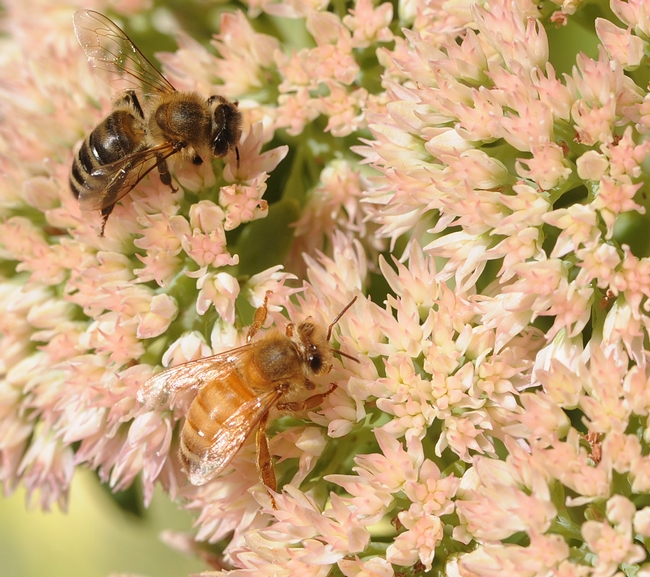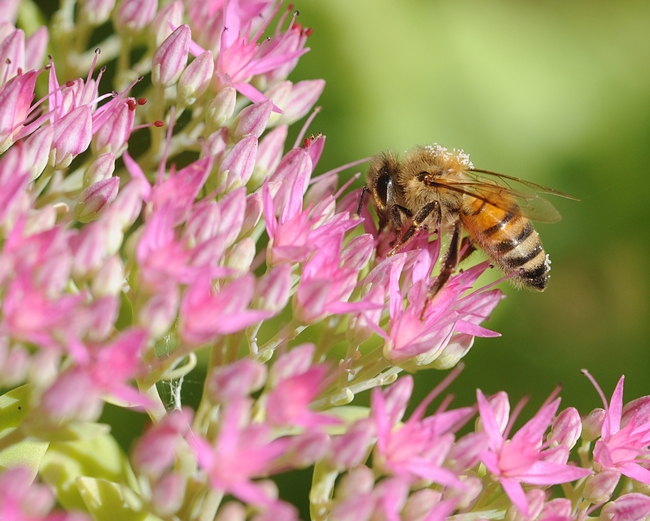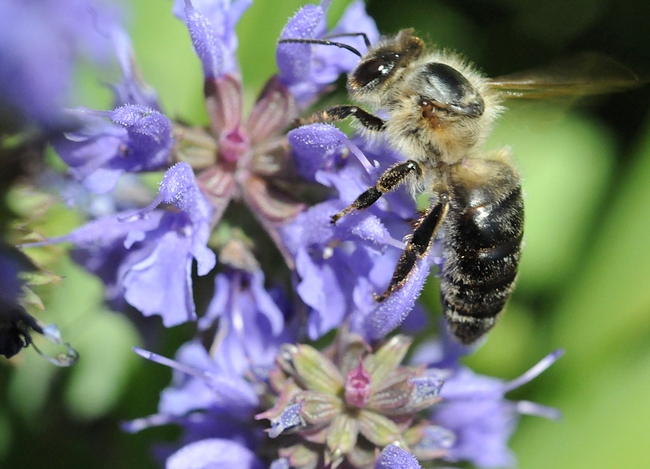Often you'll hear kindergarten students asking one another: "What's your favorite color?"
Beekeepers do that, too--in a joking sort of way. Some like to rear the blond Italians; some prefer the darker Carniolans, developed from the area of the Carniolan Alps in southeastern Europe; and others opt for the even darker bees, the Caucasians, originating from the Caucasus Mountains of eastern Europe.
It's the desirable traits, not the color, though, that really matters.
"More than 20 breeds of bees have been identified, and many of these have been tested by beekeepers for their ability to live in manmade hives, as well as their adaptability to the moderate climates of the world," writes Bee Culture editor Kim Flottum in his excellent book, The Backyard Beekeeper: An Absolute Beginner's Guide to Keeping Bees in Your Yard and Garden.
"Many species," Flottum continues in his book, "have been abandoned by beekeepers because they possess undesirable traits, such as excessive swarming, poor food-storage traits, or extreme nest protection."
Bee breeder-geneticist Susan Cobey, who has a dual appointment with the University of California, Davis and Washington State University, is partial to her New World Carniolans, a bee line she established.
Overall, the Carniolans are known as a good colder-weather bee. The Italians, though, are the most common bee in the United States. Sometimes you'll see an Italian bee so blond it's lemony.
Jackie Park-Burris of Palo Cedro, chair of the California State Apiary Board, rears Italians, which leads to good natured-ribbing between her and Cobey about "the best bee."
If you're interested in genetic diversity, mark your calendar for May 2, 2012. Cobey will speak on “Importation of Honey Bee Germplasm to Increase Genetic Diversity in Domestic Breeding Stocks" at her seminar from 12:10 to 1 p.m. in 122 Briggs Hall, UC Davis. It's part of a series of seminars that the UC Davis Department of Entomology is sponsoring. Plans are to webcast this; so stay tuned.
Meanwhile, take a look at foraging honey bees in your neighborhood. Like the patchwork coat in the Dolly Parton song, "Coat of Many Colors," you'll see many colors.
Many, many colors. And some belong to young bees with a fuzzy thorax and fresh wings, and some to old bees with a bare thorax and tattered wings.
What's your favorite bee? Native pollinator specialist Robbin Thorp, emeritus professor of entomology who maintains an office at the Harry H. Laidlaw Jr. Honey Bee Research Facility at UC Davis, says that "beauty is only skin (integument) deep."
"I prefer the ones with a good disposition regardless of their external appearance even on a 'bad hair day,'" Thorp says.
Good point.
As for me, to paraphrase American humorist Will Rogers (1879-1935), "I've never met a bee I didn't like."
I haven't met any of those highly aggressive, super-defensive Africanized bees, though.
Not yet...
Attached Images:

Darker bee and a light-colored bee foraging on sedum. (Photo by Kathy Keatley Garvey)

Beautifully striped honey bee working the sedum. (Photo by Kathy Keatley Garvey)

Caucasian bee (from the Caucasus Mountains) on saliva. (Photo by Kathy Keatley Garvey)